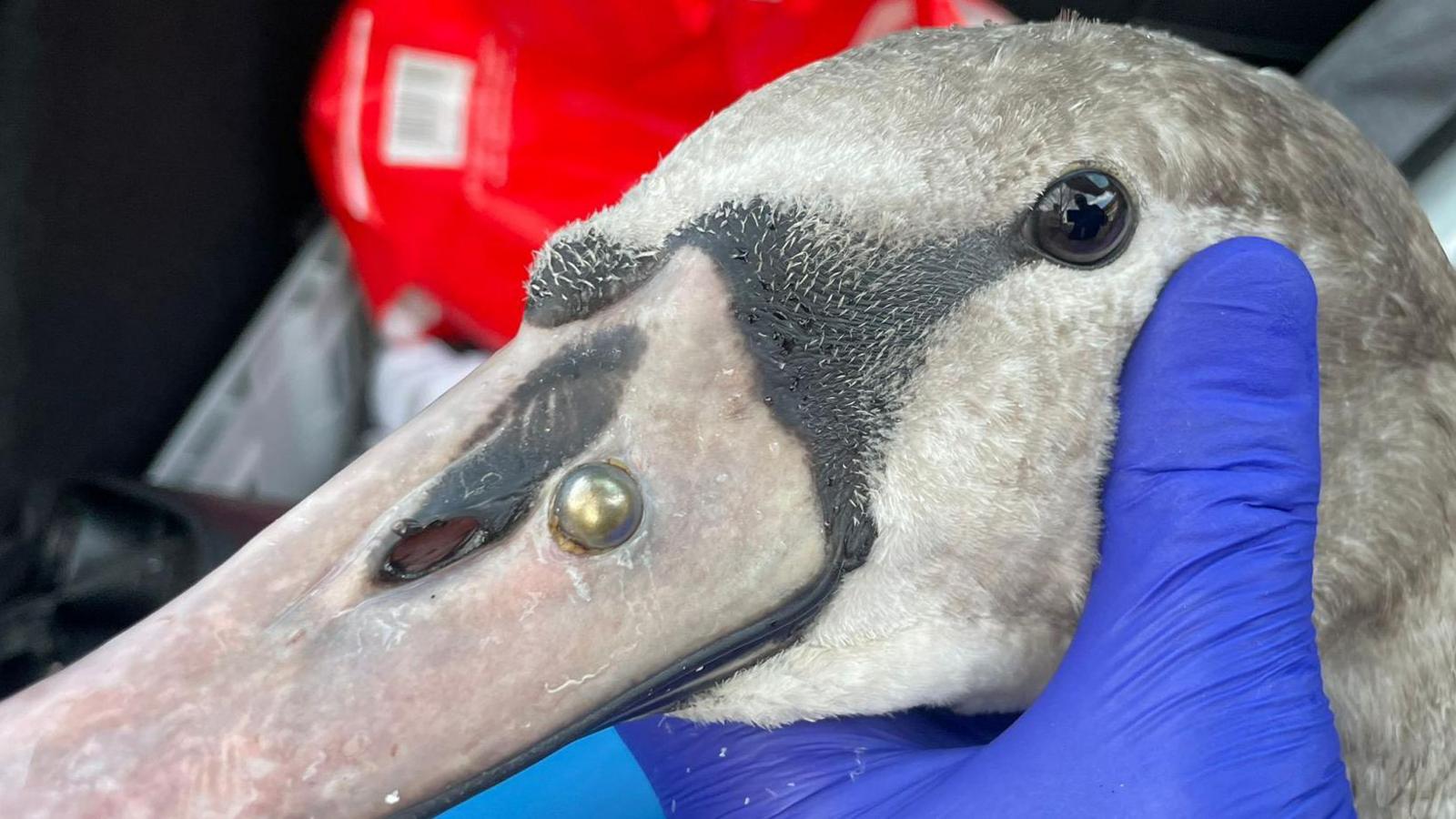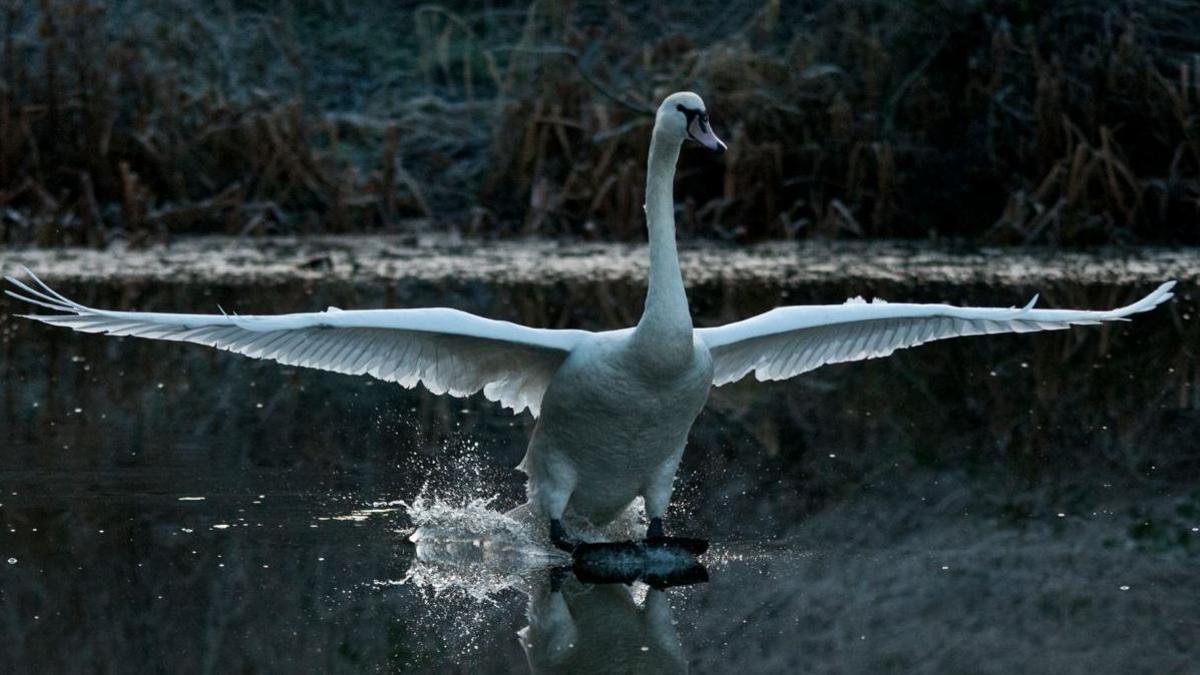Swan rescued after being 'shot with catapult'

The swan was rescued after a ball bearing was spotted embedded in its beak
- Published
A swan is recovering after being shot with a catapult, a charity has said.
The bird was found injured on the River Wansbeck in Morpeth, Northumberland, and Blyth Wildlife Rescue said it took three attempts to safely lure it on land so it could be treated.
A ball bearing was found embedded in the bird's beak, which was then safely removed, and the wound is expected to heal.
John Anderson, the charity's chairman, said it had rescued a number of injured swans this year, and he believed smaller birds were being shot and killed in the area.
Mr Anderson said he witnessed a group of youths attacking birds while he was driving home.
"They had catapults and they were shooting birds out of trees with golf balls," he said.
"We just deal with the larger birds but a lot of other birds, if they get a head shot it will crush their skulls and those birds are never found or reported."

Although the wound is expected to heal, the swan is likely to be left with a mark
He said the charity had heard unconfirmed reports that another swan had gone missing, although he said it could have just fledged and flown away.
However, Mr Anderson said the thought that it had been shot at was always in "the back of his mind".
The injured swan was treated by the charity at the end of October and will be looked after for roughly a week before being released back into the wild.
"Thankfully, it didn't break all the way though to the inside as that would have been difficult to deal with and would have required surgery," he said.
"We are only noticing it with swans. I think it is happening a lot more with other species but no-one really sees."
Follow BBC North East on X, external, Facebook, external, Nextdoor and Instagram, external.
Get in touch
Do you have a story suggestion for BBC Tyne?
More stories like this
- Published3 June

- Published3 October 2023
